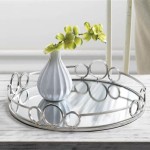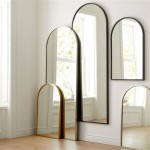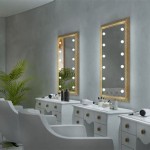How To Make Antique Mirror Out Of Glass
Creating an antique mirror finish on glass involves applying various chemical solutions to the glass surface. These solutions cause controlled degradation of the reflective backing, resulting in the characteristic speckled and aged appearance of antique mirrors.
Several techniques exist for antiquing mirrors, each producing slightly different results. Understanding the chemical processes involved allows for better control over the final aesthetic. This guide will outline different methods, including necessary safety precautions and material preparation.
Safety Precautions: Working with chemicals requires careful attention to safety. Always wear appropriate personal protective equipment (PPE), including gloves, safety goggles, and a respirator, when working with the solutions described in this guide. Adequate ventilation is crucial to avoid inhaling potentially harmful fumes. Dispose of chemical waste responsibly according to local regulations.
Preparing the Glass: Begin by thoroughly cleaning the glass surface. Any dirt, grease, or fingerprints will interfere with the antiquing process and can lead to uneven results. Use a glass cleaner and a lint-free cloth to ensure a pristine surface. For new glass, removing any manufacturer's coatings is necessary. Isopropyl alcohol can be used for this purpose.
Method 1: Using Mirror Effect Spray Paint This method provides a quick and relatively simple way to achieve an antique mirror effect. Several commercially available mirror effect spray paints offer antiquing options. Follow the manufacturer's instructions carefully, as application techniques and drying times may vary.
Method 2: Using Silver Nitrate Solution This traditional method involves applying a silver nitrate solution to the glass surface. Silver nitrate reacts with other chemicals to create the antique effect. This process requires precise measurements and controlled application. Prepare a silver nitrate solution by dissolving silver nitrate crystals in distilled water. The concentration will determine the final effect, with higher concentrations resulting in a darker, more aged appearance. Apply the solution evenly to the clean glass surface using a spray bottle or a soft brush. Allow the solution to react for a specific period before rinsing with distilled water.
Method 3: Utilizing a Two-Part Antiquing Solution Several commercial products offer two-part antiquing solutions. These typically consist of a sensitizer and an activator. The sensitizer is applied first, followed by the activator, which reacts with the sensitizer to create the aged effect. These products often offer more control over the antiquing process, allowing for different levels of aging to be achieved. Follow the manufacturer’s instructions diligently for best results.
Method 4: Creating an Aged Look with Muriatic Acid Muriatic acid, a diluted form of hydrochloric acid, can be utilized to create a more dramatically aged effect. This method requires extreme caution due to the corrosive nature of the acid. Dilute the muriatic acid with water according to the manufacturer’s guidelines. Apply the diluted solution to the back of the mirror using a spray bottle, ensuring even coverage. The acid will etch the reflective backing, creating an aged appearance. Monitor the process closely and neutralize the acid with a solution of baking soda and water once the desired effect is achieved. Rinse thoroughly with water and allow to dry completely.
Method 5: Applying a Patina Solution Patina solutions offer another approach to antiquing mirrors. These solutions contain chemicals that react with the mirror's reflective backing to create a distinct aged patina. Different patina solutions can achieve various colors and textures, offering flexibility in the final aesthetic. Apply the patina solution evenly to the back of the mirror and allow it to react according to the manufacturer's instructions. Rinse with water and allow to dry thoroughly.
Protecting the Antique Finish: Once the desired antique effect is achieved and the glass is dry, protecting the finish is essential. Applying a sealant or varnish to the back of the mirror helps prevent further oxidation and protects the antique finish from scratches and damage. Choose a sealant specifically designed for glass or mirror applications.
Troubleshooting: Uneven antiquing can occur if the glass surface wasn't thoroughly cleaned or if the antiquing solution wasn't applied evenly. Streaking can be a result of insufficient rinsing or using hard water. If unsatisfactory results occur, carefully remove the antique finish using appropriate solvents and repeat the process, ensuring meticulous cleaning and even application.
Experimentation and Practice: Achieving the perfect antique mirror finish often requires experimentation and practice. Testing the chosen method on a small piece of glass before applying it to the entire mirror allows for adjustments to the technique and chemical concentrations. Understanding the chemical processes and practicing the application methods will lead to greater control and more consistent results.
Variations and Additional Techniques: Various techniques can be combined or modified to achieve unique effects. Layering different antiquing solutions can create depth and complexity. Applying the solutions with different tools, such as sponges or textured fabrics, can produce interesting patterns and textures. Masking areas of the mirror before applying the solutions can create specific designs and borders.

Diy Antique Mirror Easy To Do And Looks Authentic My Creative Days

The Ultimate Guide On Diy Antique Mirrors So Much Better With Age

The Ultimate Guide On Diy Antique Mirrors So Much Better With Age

How To Antique A Mirror Easy No Scratching The Navage Patch

Diy Antique Mirror Easy To Do And Looks Authentic My Creative Days

How To Antique A Mirror Tutorial Jenna Sue Design

Diy Mercury Glass Gilded Mirror Made From Old Photo Frames

How To Antique A Mirror From The Front With Paint Average But Inspired

10 Tutorials On How To Antique A Mirror So Much Better With Age

How To Antique A Mirror Tutorial Jenna Sue Design








